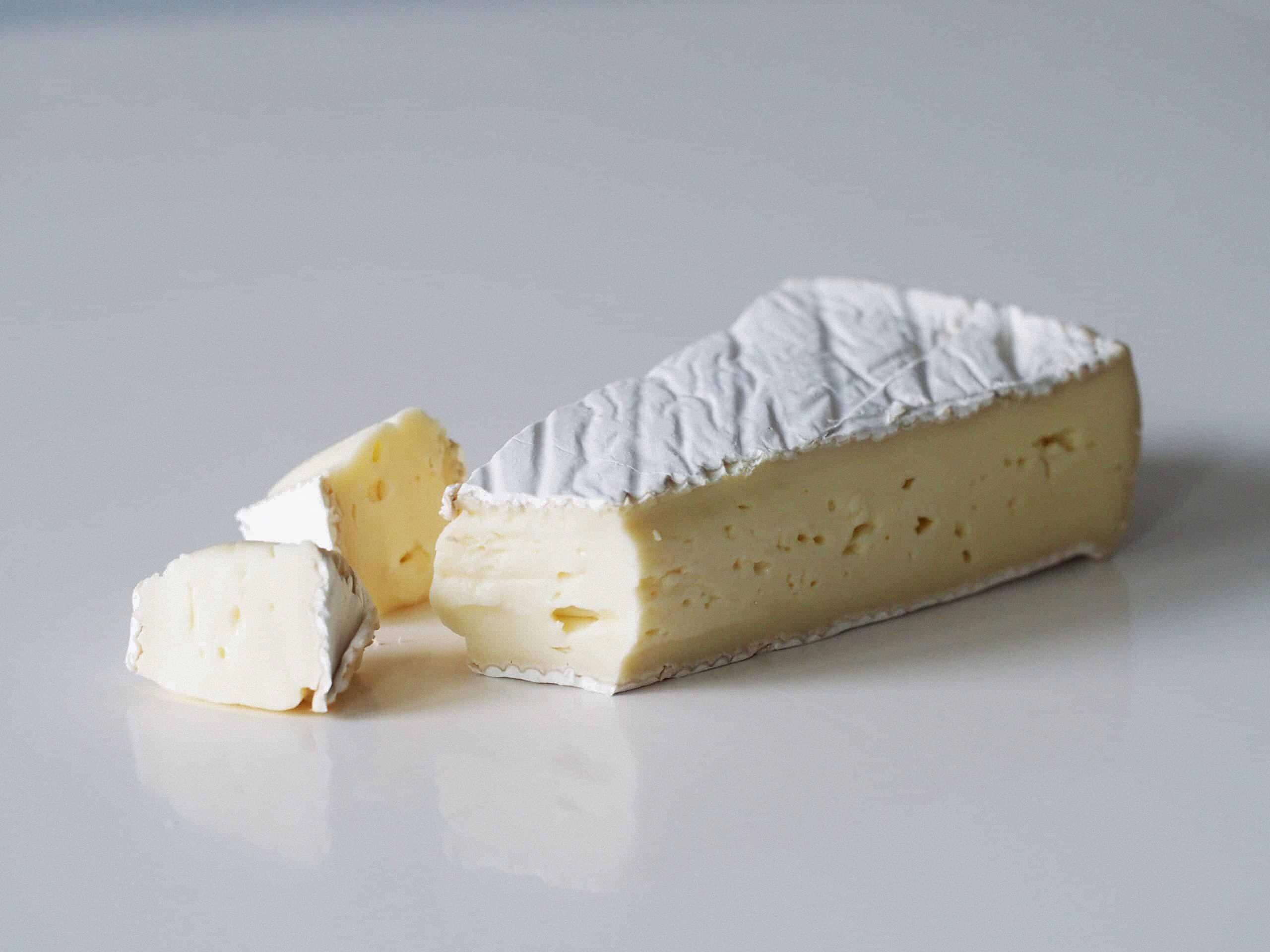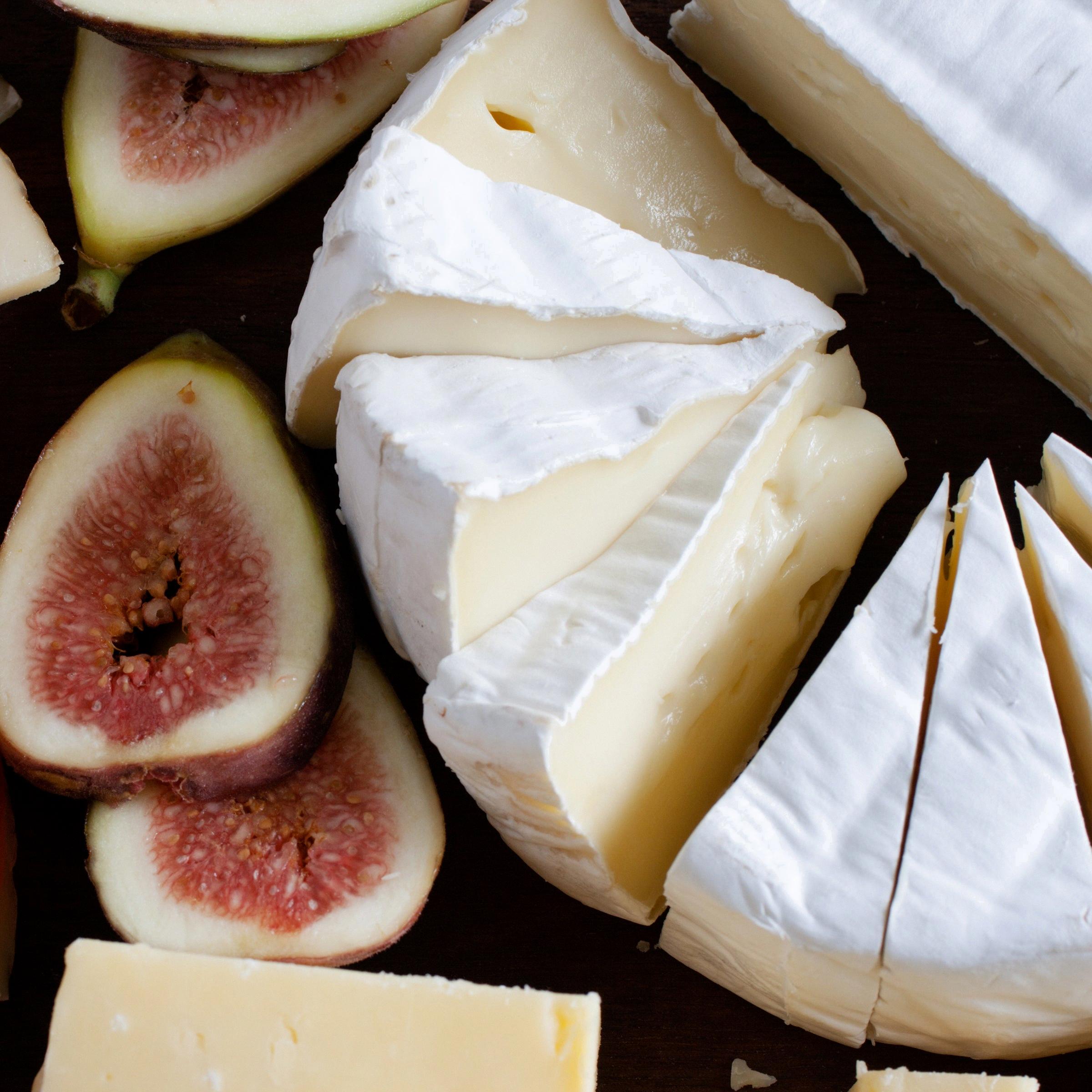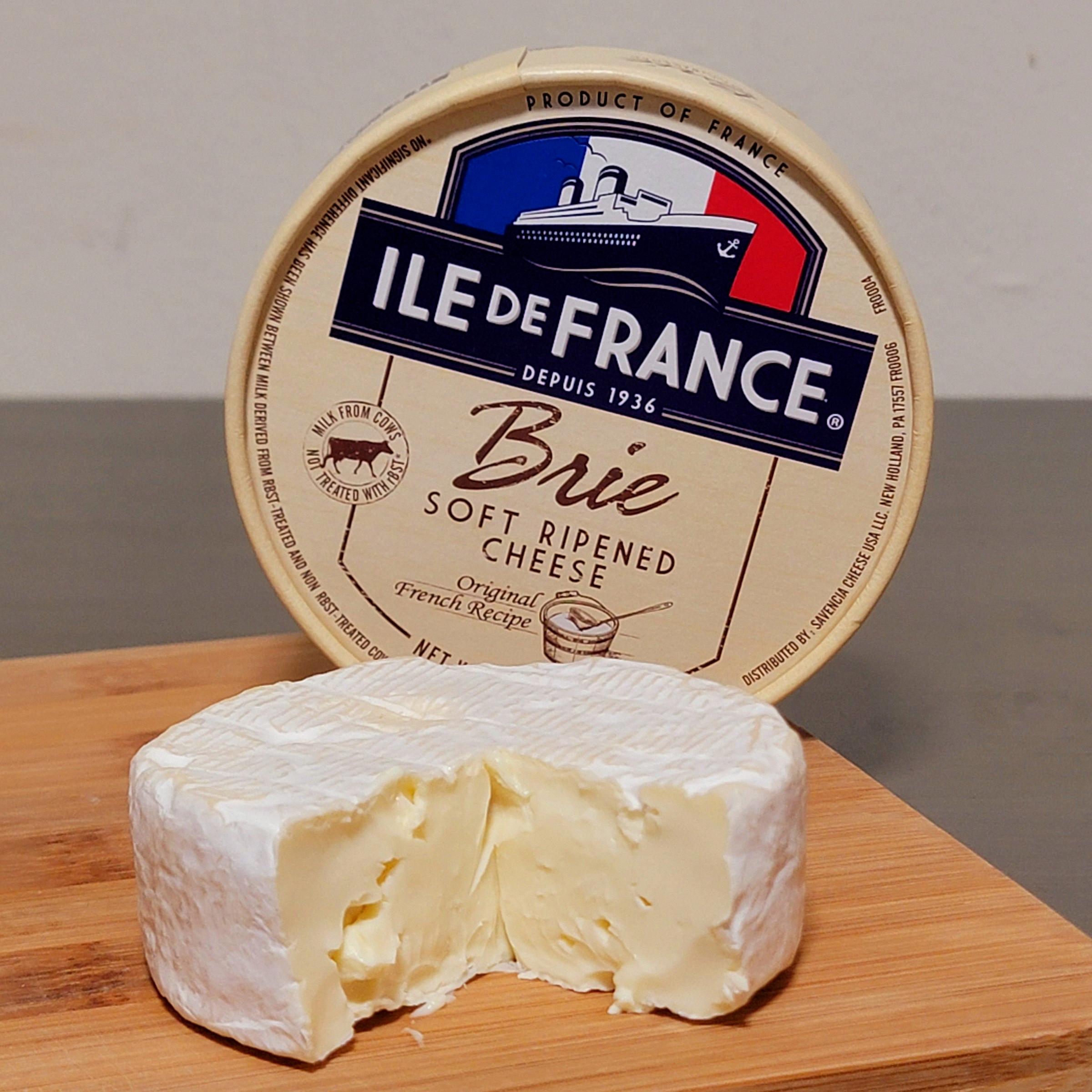Brie is a French cheese that has become popular all over the world due to its creamy texture and mild flavor. It is a soft-ripened cheese that is made from cow’s milk and has a bloomy rind. The rind is created by adding edible mold to the cheese, which gives it a white, velvety appearance.
Many people wonder whether or not it is safe to eat the rind of Brie. The answer is a resounding yes! In fact, eating the rind is a crucial part of enjoying this cheese. The rind is completely edible and adds a unique flavor and texture to the cheese.
The rind of Brie is made up of a type of mold called Penicillium candidum. This mold is safe to eat and is actually added to the cheese intentionally during the cheese-making process. The mold helps to break down the cheese, giving it a creamy texture and distinct flavor.
To enjoy Brie, simply cut off a small piece of the cheese and eat it with a small bite of bread. You can also pair it with crackers, fruit, or nuts. The rind should be consumed along with the cheese, as it adds a unique flavor and texture to the oveall experience.
However, it is important to note that not all rinds are created equal. Some Brie rinds may be thicker or more pungent than others, depending on how the cheese is made. If you are unsure about the rind, it is best to ask the cheesemonger for their recommendation.
Brie is a delicious cheese that should be enjoyed in its entirety, including the rind. Eating the rind is safe and adds a unique flavor and texture to the overall experience. So next time you enjoy a piece of Brie, don’t be afraid to savor it bite by bite, rind and all.
Removing the Outer Coating of Brie
When it comes to Brie, the outer coating or rind is completely edible and safe to consume. In fact, many people enjoy the unique texture and flavor that the rind adds to the cheese. The rind is made up of a natural mold called Penicillium candidum, which is responsible for the velvety, white layer on the outsie of the cheese. Removing the rind will not alter the taste of the cheese, but it may change the texture and appearance. Therefore, it is entirely up to personal preference whether to eat the rind or not. However, if the rind appears to be moldy or discolored, it is best to discard it and not consume the cheese.

Source: solidstarts.com
Properly Eating Brie Cheese
When it comes to enjoying Brie cheese, there are a few things to keep in mind to ensure that you’re savoring it properly. First and foremost, it’s unnecessary to scoop out half of the wedge, spread the cheese, or create a sandwich. Instead, the best way to eat Brie cheese is to simply pair a small piece of cheese with a small bite of bread. This allws you to fully appreciate the delicate, creamy texture and rich, buttery flavor of the cheese without overpowering it with other ingredients.
Another thing to keep in mind is that it is perfectly acceptable, and in fact, encouraged, to eat the rind of the cheese. Some people may be tempted to scrape out the inside of the cheese and discard the rind, but this is actually considered gauche by some cheese connoisseurs. The rind is an integral part of the cheese, providing a slightly earthy, nutty flavor and a bit of texture that complements the creamy interior.
When selecting your Brie cheese, look for a wedge that is soft and supple to the touch, with a slightly pungent aroma. It’s best to let the cheese come to room temperature before serving, as this will enhance the flavor and make it easier to spread. To serve, simply cut a small piece of cheese and place it on a slice of bread or cracker. Take a bite, savoring the rich, creamy flavor and the subtle tanginess of the rind. Repeat, enjoying each small bite of cheese and bread to the fullest.
Can You Eat The Outside Of Brie Cheese?
The outside of Brie cheese is a bloomy rind that is formed by inoculating the cheese with edible mold. This mold is then patted down repeatedly to form the characteristic white, velvety rind. The rind is safe to eat and many people enjoy the unique texture and flavor it provides. However, some people choose to remove the rind before eating the cheese. It is a matter of personal preference, but it is important to note that the rind is an integral part of the cheese’s character and flavors.
The Benefits of Eating Brie for Gut Health
Brie cheese is a soft and creamy cheese made from cow’s milk. While it is not typically considered a probiotic food, it does contain some bacteria that can be beneficial for gut health. Brie cheese is made using a combination of bacteria and mold, including Penicillium candidum, which can help to break down lactose and aid in digestion. Additionally, Brie cheese contains small amounts of Lactobacillus bacteria, which are knwn to support gut health by balancing the microbiome and promoting healthy bowel movements. However, it is important to note that Brie cheese is also high in saturated fat and sodium, so it should be consumed in moderation as part of a balanced diet. Overall, while Brie cheese may not be a traditional probiotic food, it does contain some beneficial bacteria that can contribute to a healthy gut microbiome when consumed in moderation.
Should I Remove the Rind Before Baking Brie?
While some people choose to cut the rind off Brie bfore baking, it is generally recommended to keep the rind on. This is because the rind helps the cheese to hold its shape and prevents it from melting out too quickly. Additionally, the rind is completely edible and adds a unique flavor and texture to the cheese.
However, if you prefer not to eat the rind, it is perfectly fine to remove it after baking. To do so, simply use a knife to cut around the edge of the cheese and carefully peel away the top layer. You can then enjoy the melted cheese with or without the rind, depending on your preference. Overall, whether or not to keep the rind on Brie before baking is a matter of personal taste, but leaving it on can enhance both the taste and appearance of the finished dish.

Source: igourmet.com
The Best Way to Enjoy Brie: Warm or Cold?
Brie cheese is knwn for its creamy, buttery texture and mild flavor, and whether it is better served warm or cold is a matter of personal preference. However, it is recommended that Brie be served at room temperature or warmed, rather than chilled, to enhance its flavor and texture. When served at room temperature, the Brie cheese becomes soft and spreadable, allowing its flavors to develop fully. Warming the Brie slightly can also help to enhance its creamy texture and bring out its rich, nutty flavor. On the other hand, serving Brie cheese cold can cause it to become firm and less flavorful. Therefore, it is recommended to serve Brie either at room temperature or slightly warmed to experience the full range of its flavors and textures.
When Is It Not Appropriate to Eat Brie?
Brie cheese is a soft cheese with a delicate flavor that can be enjoyed on its own or added to various recipes. However, there are some instances where you should avoid eating Brie cheese.
Firstly, if you notice any mold growth or an off smell, it’s best to discard the cheese immediately. Mold growth on Brie cheese can be harmful, and it’s not recommended to cut off the mold and consume the rest of the cheese.
Additionally, if the Brie cheese has passed its expiration date, it’s advisable not to eat it. While Brie cheese can still be consumed aftr the expiration date, the taste and texture may have deteriorated, making it unappetizing.
If you are pregnant or have a weakened immune system, it’s recommended to avoid consuming soft cheeses like Brie. These types of cheeses can contain Listeria bacteria, which can cause serious health problems for vulnerable individuals.
In summary, it’s best not to eat Brie cheese if it has mold growth or an off smell, has passed its expiration date, or if you are pregnant or have a weakened immune system.
The Safety of Microwaving Brie
Yes, you can microwave Brie. To do so, start by cutting the top rind off the cheese and placing it in the microwave on high for 60 seconds. If the cheese is not yet soft and hot after 1 minute, place it back in the microwave for anothr 30 seconds on high. Depending on the ripeness of the cheese, it may take anywhere from 60 to 90 seconds on high to heat and melt. It’s important to monitor the cheese closely while microwaving to ensure it doesn’t overheat or burn. By microwaving Brie, you can quickly and easily enjoy warm, gooey cheese that pairs perfectly with crackers, bread, or fruit.
Does Brie Cheese Contain Penicillin?
No, there is no penicillin in Brie cheese. Brie cheese, along with other surface-ripened cheeses such as Camembert and blue vein cheeses, are made using moulds from the Penicillium group. However, the species of Penicillium used in cheese-making do not produce the antibiotic penicillin. Therefore, consuming these types of cheese does not pose a risk of exposure to penicillin. It is important to note that people with severe allergies to penicillin may still need to exercise caution and consult with their healthcare provider before consuming any foods containing Penicillium moulds.

Source: gardenofesther.com
The Effects of Eating Too Much Brie Cheese
Brie cheese is a delicious and creamy cheese that is loved by many. However, consuming too much Brie cheese could have negative effects on your health. Brie cheese, like most cheeses, is high in saturated fat and sodium. Eating large amounts of Brie cheese can increase your risk of developing high cholesterol and high blood pressure, which are both risk factors for cardiovascular disease (CVD). CVD is a condition that affects the heart and blood vessels, and it can lead to serious health problems like heart attacks and strokes. Additionally, consuming excessive amounts of Brie cheese could lead to weight gain and other health issues associatd with obesity. It is important to consume Brie cheese in moderation and as part of a balanced diet to reap its nutritional benefits without putting your health at risk.
Does Brie Require Oxygen?
Yes, Brie neds to breathe. Like all cheeses, Brie is a living and breathing product that continues to ripen after it has been made. If it is not allowed to breathe, mold can develop and spoil the cheese. To prevent this, it is important to store Brie in a way that allows air to circulate around it. This means that you should not wrap it tightly in plastic, as this will restrict its airflow. Instead, you should loosely wrap it in waxed paper or parchment paper and store it in the refrigerator for only a few days. This will keep the cheese fresh and allow it to continue to ripen properly. So, if you want to enjoy the full flavor and texture of Brie, it is important to store it in a way that allows it to breathe.
Conclusion
In conclusion, Brie is a delicious and versatile cheese that can be enjoyed in many ways. Its soft and creamy texture, combined with the bloomy rind, make it a unique and flavorful addition to any cheese plate or dish. The rind is completely edible and adds a layer of complexity to the flavor profile of the cheese. Whether you enjoy it on its own or pair it with bread, fruit, or wine, Brie is a cheese that will satisfy any palate. So, next time you indulge in a wedge of Brie, don’t hesitate to savor eery bite, including the rind.
